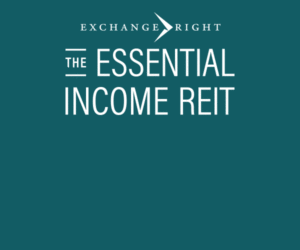What’s Up (or Down) with Fees?
October 12, 2016 | by Beth Glavosek | Blue Vault
The introduction of Class T shares has had an interesting impact on the nontraded REIT industry from a sales perspective and distribution yield perspective.

As we’ve discussed previously, the T share was introduced in response to investor concerns about upfront fees. It reduces the upfront load traditionally paid on nontraded REIT Class A shares and instead pays a trailing commission (sometimes called a shareholder servicing fee) over time. This structure is thought to put more investor money “in the ground” upfront, while the trailing commissions are paid from returns generated by the REITs’ performance.
Blue Vault’s newest Fee Study¹ looked at data from the 30 effective nontraded REITs raising funds as of September 30, 2016. Of those, all but one offered common shares classified as Class A shares or had only one class of common shares. Four offered “perpetual” offerings that have a daily NAV feature. Three of those daily NAV REITs had share-class specific expenses or fees that reduced the effective distribution yields for their Class A shares by 0.50% annualized.
The Fee Study also revealed some key findings about T shares:
- The impact of Class T shares on effective nontraded REIT offerings has been dramatic, as 22 of the 30 open offerings now include Class T shares.
- This class of shares has trailing shareholder servicing fees ranging from a low of 0.80% annualized to as high as 1.125% annualized, which effectively reduces the distribution yields for Class T shares by that amount relative to the same REIT’s Class A distribution yields.
- These trailing commissions or fees are expected to continue for up to four or five years after the Class T shares are sold, depending upon when total underwriting compensation for an offering reaches 10% of gross offering proceeds. At that point, the trailing fees will be eliminated.
- The trailing commissions or shareholder servicing fees are based upon the initial offering prices or daily NAVs of shares (once reported.) After the limit on total underwriting compensation is reached and the shareholder servicing fees are eliminated, the Class T shares will be equivalent to Class A shares with regard to distributions per share.
The initial offering prices of Class T shares in most effective offerings are set such that, after selling commissions, dealer manager fees, and other offering expenses are deducted, the net proceeds to the REIT are the same for Class A and Class T shares. Still, the lower upfront fees for Class T shares results in a higher percentage of the Class T offering proceeds being available for investment.
In upcoming blog posts, we’ll look at additional topics surrounding fees that affect the nontraded REIT and BDC industry.
¹Blue Vault will publish its first ever Nontraded REIT Fee Study at the end of October.
The first Blue Vault Nontraded REIT Fees Study provides in-depth analysis of all fees associated with nontraded REIT investments currently offered, including definitions of the fees, how the fees impact shareholder returns, and a complete data set with each of the REIT’s share class fees as well as ranges, averages, and medians for the industry.
This study is the first of its kind to be a comprehensive view of the fee structures of nontraded REIT offerings, and the first to analyze the impacts of those fees on eventual shareholder returns. As the industry evolves with new share classes and class-specific expense allocations, such as the shareholder servicing fees assessed to Class T shares, it is more important than ever to understand how fees are calculated, assessed and will impact shareholders. The study provides both a glossary of terms as well as extensive tables and appendices with specific examples from the prospectuses of nontraded REITs. It also examines historical trends from closed offerings to identify how current offerings compare to those of the past.











